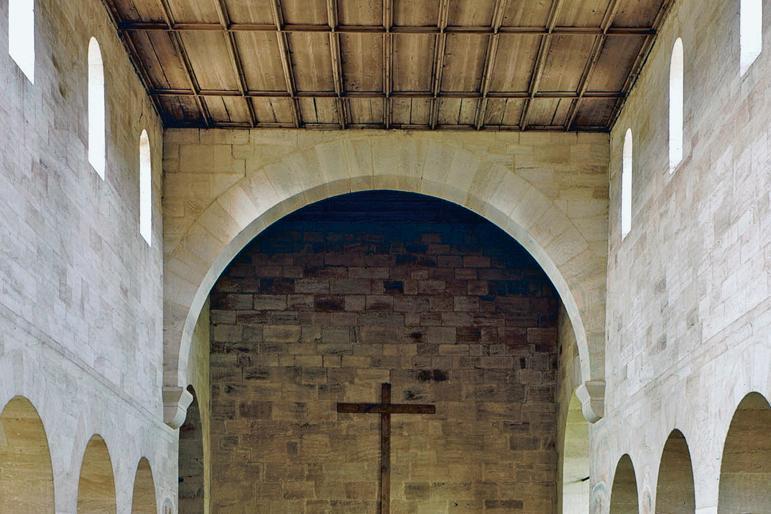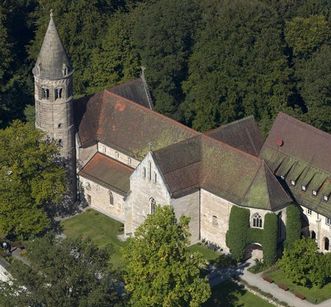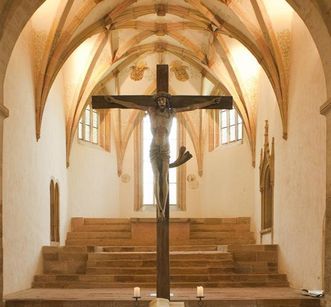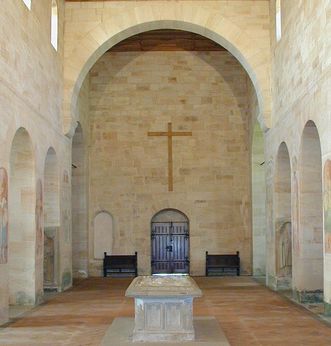A mighty impression from the outside
The facade with two towers, the west wing, is visible from miles away. The Romanesque monastery church must have been magnificent to behold. It was built as a typical Romanesque pillar basilica on the outline of a Latin cross. Small round-arched windows allow light to reach the central nave and the aisles. Inside, the Romanesque choir rises up several steps across from the nave. The high altar was dedicated in 1139, at which point most of the church was likely already completed.






